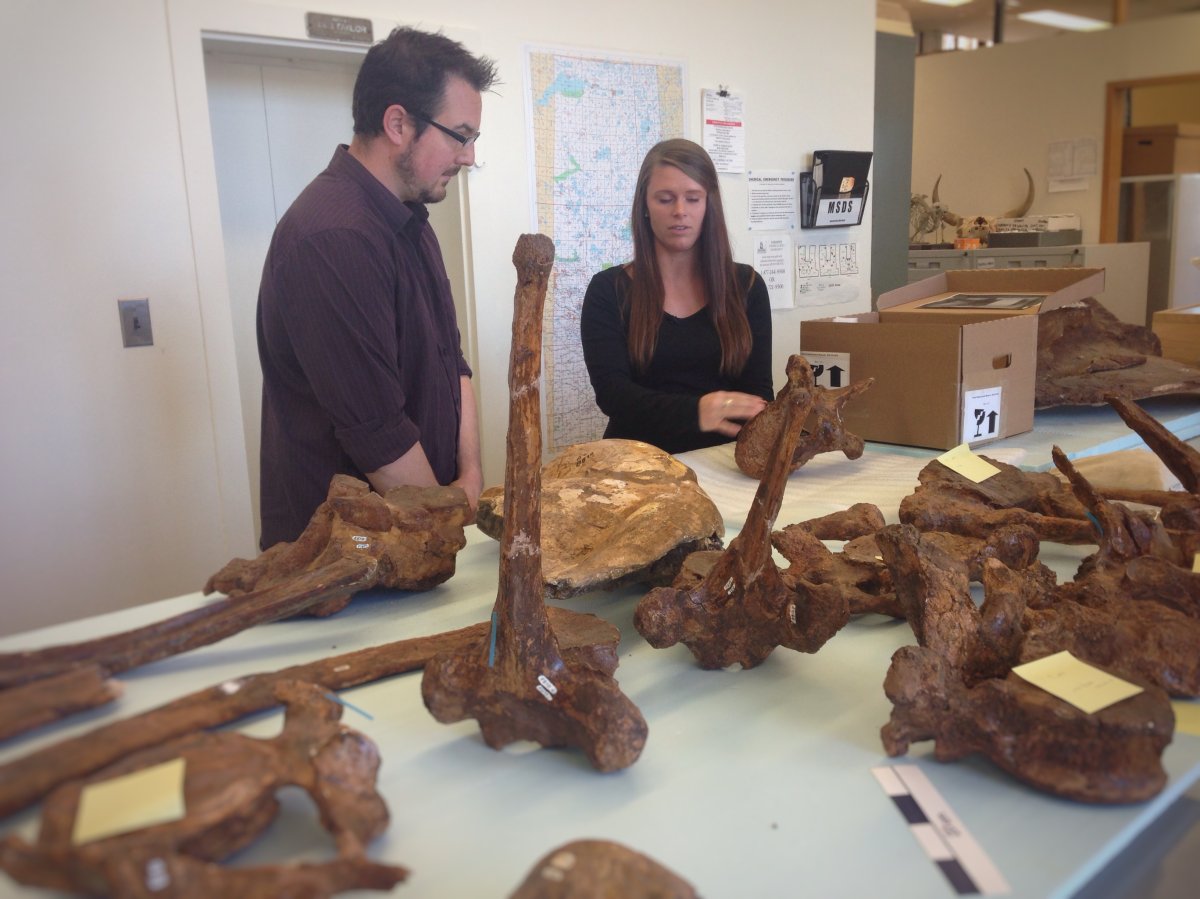REGINA – Thanks to its tractor operator, a 1964 construction crew made a major historical discovery.

Just three miles west of Kyle, Saskatchewan, about an hour north of Swift Current, William McEvoy and his road crew unearthed rare fossils prompting archaeologists, news paper reporters and curious spectators to flood the small town of approximately 500 people.
This would be the first known mammoth in Saskatchewan to have been hunted by people and the only one so far.
“When they were actually digging up the site, there was about 20,000 people who came to see the site,” said Doug Barker, Kyle’s current mayor.
Archaeologists determined the bones belonged to an ancient megafauna – the woolly mammoth.
“They found about 20 bones, the largest being a tooth, about 12 inches by 8 inches and then a mammoth tusk which is about 8 feet long,” said Barker.
Approximately the size of the African elephant, the woolly mammoth’s full coat of fur protected it from the cold of the ice age, but for reasons unknown, mammoth populations began to decline until going extinct 4,000 years ago. (More on the ice age here.)
At the time of its discovery, archaeologists determined the Kyle woolly mammoth had died of natural causes long before its species disappeared. They sent the fossils to the Royal Saskatchewan Museum in Regina where they were put in storage for the last 51 years.
Then, University of Saskatchewan master’s student Eliann Stoffel got curious.
- Budget 2024 failed to spark ‘political reboot’ for Liberals, polling suggests
- Train goes up in flames while rolling through London, Ont. Here’s what we know
- Peel police chief met Sri Lankan officer a court says ‘participated’ in torture
- Wrong remains sent to ‘exhausted’ Canadian family after death on Cuba vacation
Radiocarbon dating from the 1960’s estimates the fossils to be about 12,000 years old “which is perfect timing for both Paleoindian people and mammoths to be in Saskatchewan at the same time.”
That gave Stoffel a sneaking suspicion about humans’ role in the animal’s death: perhaps they hunted it.
“This would be the first known mammoth in Saskatchewan to have been hunted by people. And the only one so far,” Stoffel said.
If she finds evidence to prove her hypothesis correct, her research will shed light on ancient hunting patterns and techniques.
“It is interesting to know that they were hunting these and how they kept warm at that time with just the minimal amount of meat they could acquire from bison or mammoths and how they built their shelters out of ribs. You see that sometimes.”
Watch Focus Saskatchewan’s feature The Kyle Wooly Mammoth at 6:30 pm Saturday and Sunday on Global News.




Comments